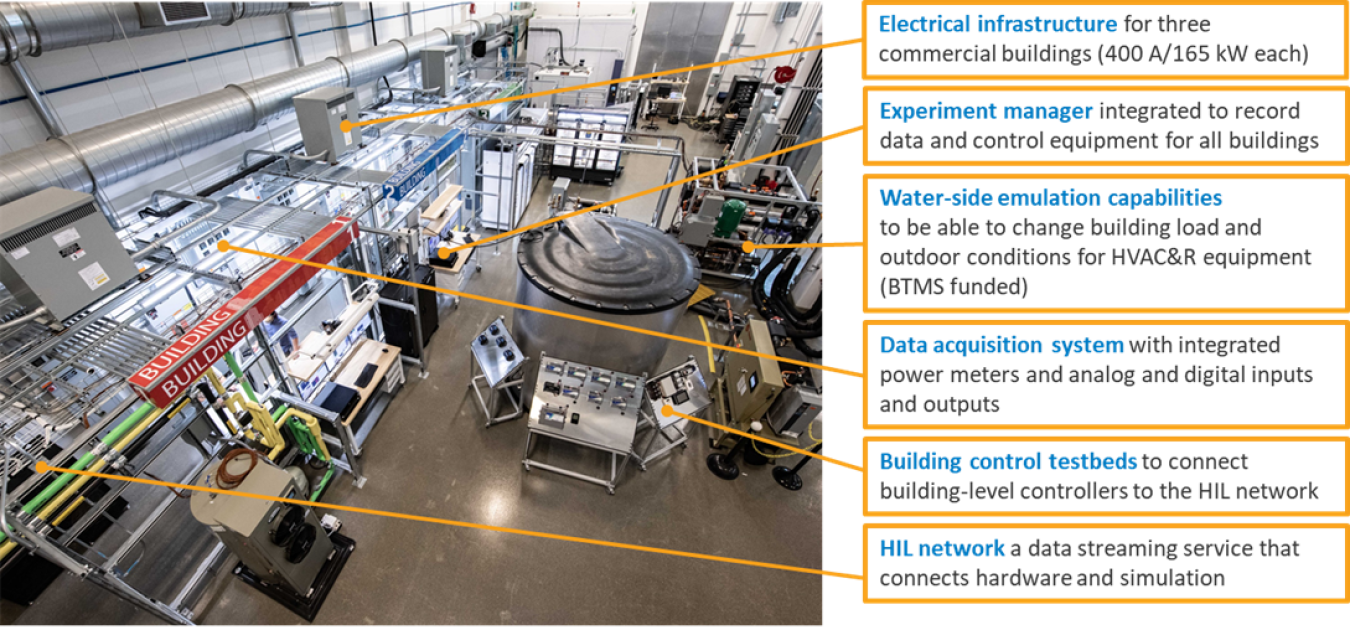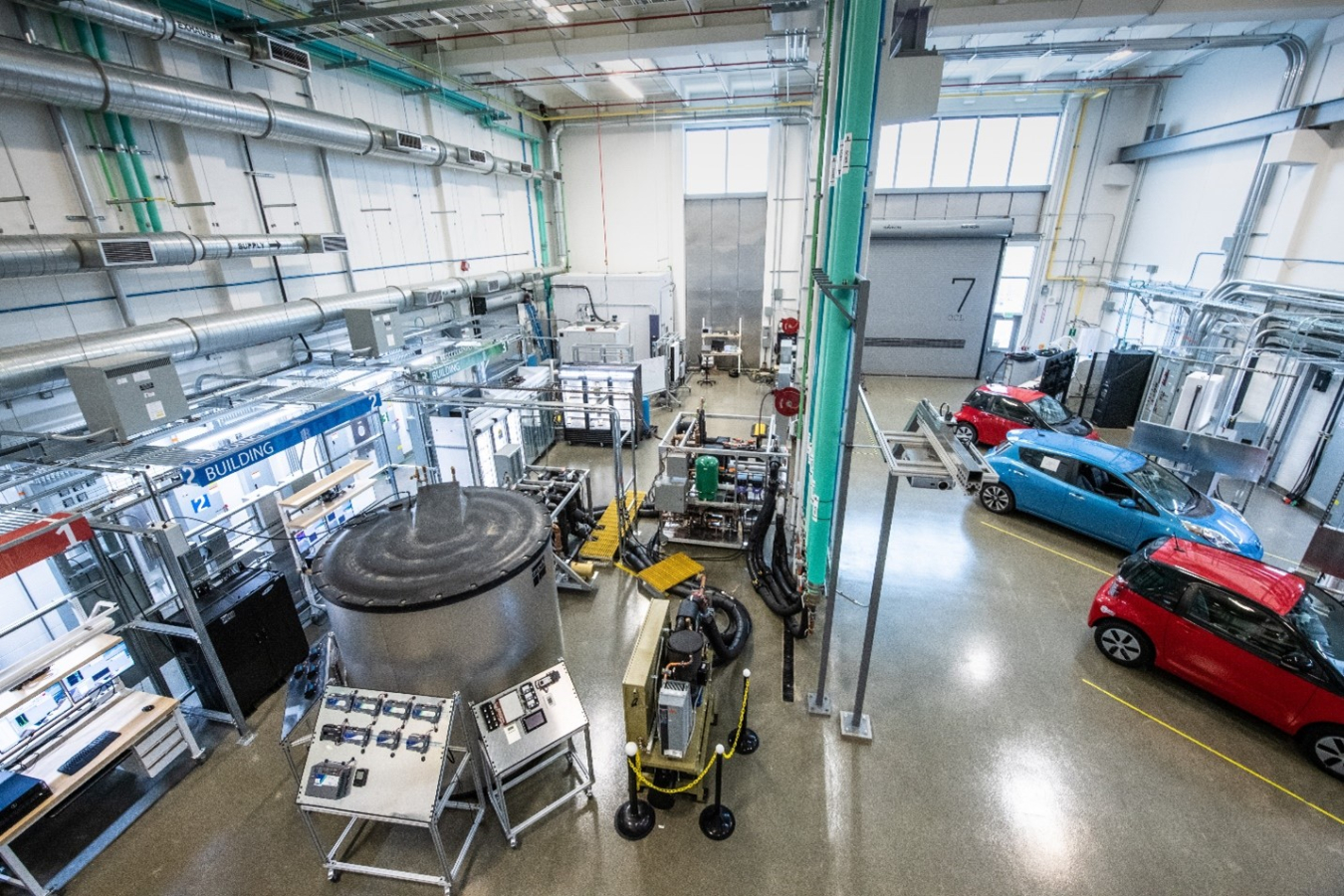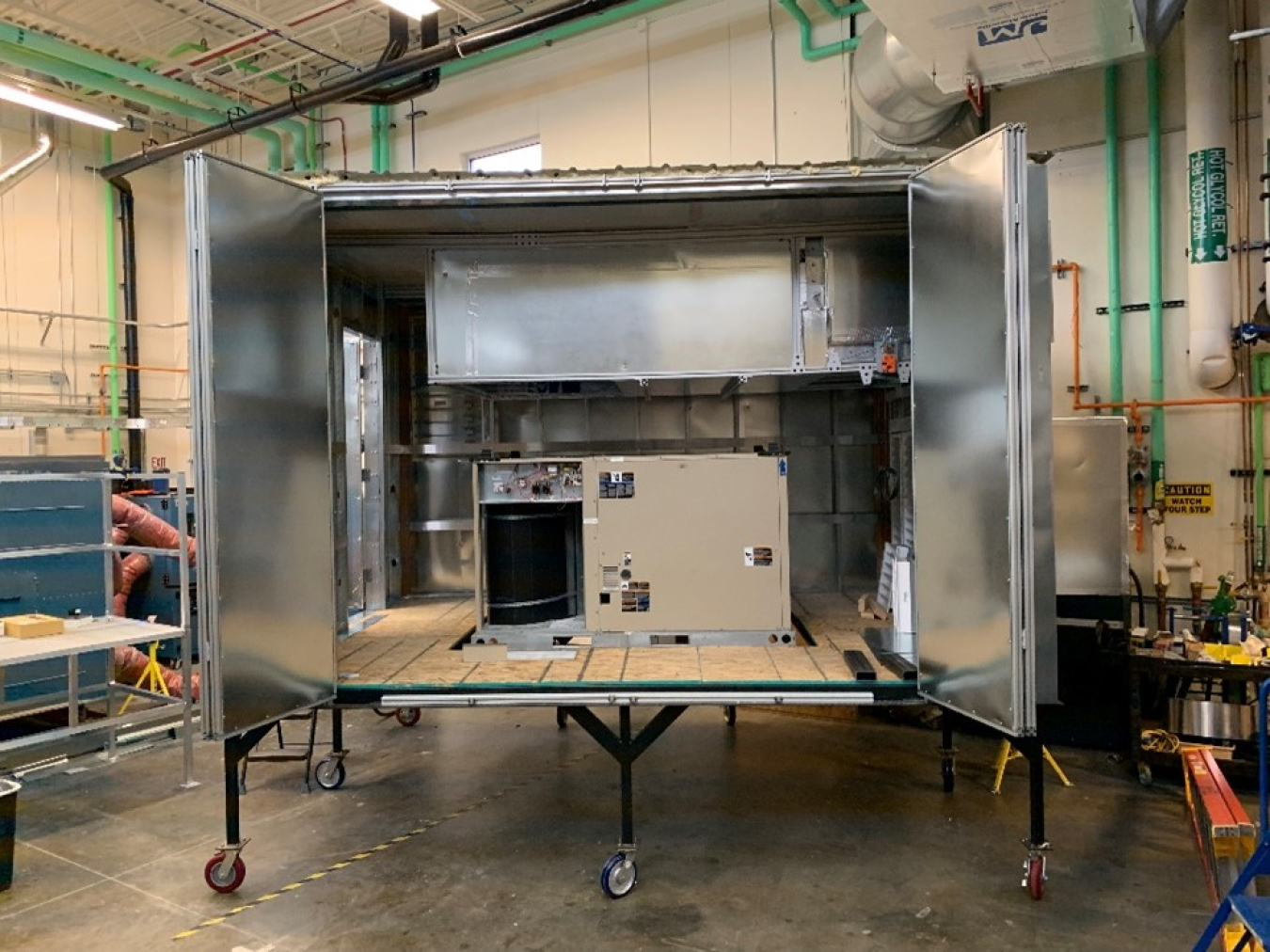Lead Performer: National Renewable Energy Laboratory – Golden, CO; Partners: Emerson Climate Technologies - Sidney, OH, Commonwealth Edison - Chicago, IL
October 13, 2021
The Commercial Building Research Infrastructure (funded in part by CBI) was built to develop and validate GEB technologies. The infrastructure provides a platform for researchers to use up to three commercial buildings for isolated or combined experiments. The infrastructure is designed to easily accept the installation of physical building technologies and control systems while providing the ability to integrate that hardware into complex simulation software to enable hardware-in-the-loop experimentation.
https://www.nrel.gov/buildings/infrastructure.html
Lead Performer: National Renewable Energy Laboratory – Golden, CO
Partners:
-- Emerson Climate Technologies - Sidney, Ohio
-- Commonwealth Edison - Chicago, IL
DOE Total Funding: $777,000 (FY22 proposed additional funds $650,000)
FY21 DOE Funding: $650,000
Cost Share: $950,000 (FY22 proposed additional cost share $500,000)
Project Term: October 2020 — September 2022
Funding Type: Direct Funded
Project Objective
In this project, researchers at the National Renewable Energy Laboratory (NREL) collaborate with industry partners to develop and validate packages of controls and hardware for commercial buildings that will provide significant enhancements to energy performance and load flexibility while improving or maintaining food safety and occupant comfort. The success of this project relies on leveraging state-of-the-art experimental facilities, such as the Commercial Buildings Research Infrastructure (CBRI) in NREL’s Energy Systems Integration Facility (ESIF). This project has three main RDD&D areas:
- Commercial Refrigeration Load Flexibility Development: NREL will implement advanced building controls to improve the energy efficiency and load flexibility of commercial buildings with significant refrigerant loads. This project will develop and evaluate grid-interactive efficient buildings (GEB) control packages for existing commercial refrigeration and heating, ventilating, and air conditioning technologies, allowing these buildings to provide energy savings and grid services such as load shifting and load shedding.
- R&D of Water-Cooled Stand-alone Refrigerated Cases: NREL will improve energy efficiency of stand-alone refrigerated cases while providing load flexibility options for the market. Project partners will be integrated in the project to provide technical solutions as well as assist with deployment of technologies.
- Rooftop Unit Coordination: NREL will develop and validate supervisory RTU control algorithms with industry partners to optimize energy and peak demand performance of multiple RTUs as a coordinated system using hardware-in-the-loop experimentation.
Project Impact
With the goals of improving energy efficiency and building flexibility, this project supports the development and deployment of commercial GEB building technologies in support of the larger vision of a more robust and sustainable grid. Results of this project will be provided to industry through technical reports, journal articles, and other industry outreach.
Contacts
DOE Technology Manager: Stephanie Johnson
Lead Performer: Grant Wheeler, NREL
Related Publications
Stephanie Johnson and Grant Wheeler. September 2019. “Commercial Buildings Research Infrastructure: A Sandbox for Utilities and Building Owners to Evaluate Traditional Energy Savings and Other Non-Traditional Benefits.” 13th Rocky Mountain Utility Exchange.
Stephanie Johnson and Grant Wheeler. September, 2020. “Effective Evaluation of Efficient and Flexible Building Technologies for Utilities.” 14th Rocky Mountain Utility Exchange.

The CBRI is located next to two additional infrastructure installations including behind-the-meter storage (funded in part by ET), and the Electric Vehicle Grid Infrastructure (funded in part by VTO). Together these three infrastructures provide an ideal location to develop and validate GEB technologies, allowing for research focusing on commercial building loads, storage, and electric vehicles.

This AOP also funded the development of a dynamic commercial rooftop unit testbed. Compared to typical psychrometric or environmental chambers, this testbed was specifically designed for dynamic and realistic control of an RTU. For example, this RTU can use its economizer to condition based on its control algorithms. This testbed was built leveraging previously installed NREL infrastructure providing a unique experimental capability for GEB HVAC technologies.

